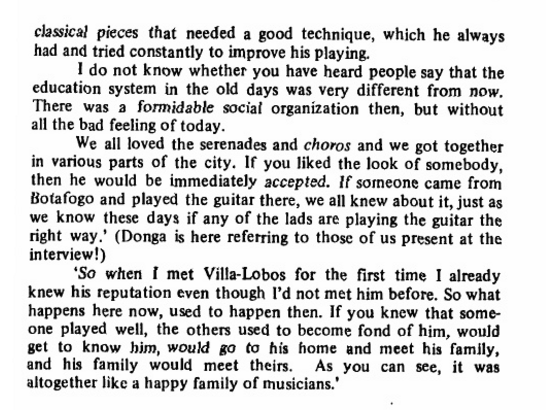Andrew Farach-Colton has a
feature story in the latest Gramophone magazine entitled
Viva Latin America. With the Olympic Games underway in Rio de Janeiro, and Latin American music featured at the BBC Proms, this is the summer (or rather, in most of Latin America, the winter) to listen to Villa-Lobos, Chavez, Revueltas and most especially, Centennial Boy Alberto Ginastera. It brings up some issues and questions that I've been pondering a lot in the last few years, as I soldier on promoting the Big Guy on the web.
The basic facts are presented well: Latin American music seems to continue to suffer from a lack of profile, though I'm not sure (North) American music is really that much better off compared to European music. For a while in the new century it looked like Villa-Lobos would break through into the average concert goer's/record buyer's consciousness, but the reputation bounce from the 2009 Villa-Lobos Year hasn't done much better than the Republican National Convention's. After Villa, even at this lower level, there's a big drop-off. Is Latin American music a One Hit Wonder?
Unfortunately, even with Villa-Lobos there's a basic problem that comes with the perception that he was impossibly prolific. He was an undisciplined composer, to be sure, but the catalogue of his substantial works isn't outrageously large. Rather, he was a dedicated musical educator, and the everyday-ness of his arranging, especially for choir and band, resulted in multiple versions of many works. Some works are lost, it's true, but even with that list you can't be sure if he ever actually wrote them, or merely had meant to write them and never got around to it. A corollary of this focus on the hugeness of his catalogue is the idea that there's a huge undiscovered mass of music waiting to be discovered. The fact of the matter is that the vast majority of Villa's music has been published, and the vast majority of that has been recorded, if not always that well. David Appleby pretty much got a handle on the Villa-Lobos Bibliography
back in 1988, and that work has been extended by assiduous work by the Museu Villa-Lobos. His list of (substantial) works doesn't make it to 600, which is a lot, but puts him in the same ballpark as Bach and Telemann and Milhaud.
Villa-Lobos has actually been very well served by the gramophone industry. All 17 of the amazing
String Quartets have been recorded, multiple times. All of his
piano music as well (and it only makes up 7 or 8 discs in total). The core of his orchestral music - the Bachianas Brasileiras and (finally!) the Choros - is on disc in
superb recordings. The guitar music has been recorded to death. Pretty much all of the chamber music, the concertos. most important choral works (a subset of a larger total, to be sure), all of this is on CD and streaming services. The symphonies? It's completely wrong for Arthur Nestrovski to say, as he does in the article, that OSESP's current symphonies series underway with Naxos is the first on record. There's a
marvellous series on CPO from Stuttgart, conducted by Carl St. Clair, from around the turn of the century, and all still available.
And I can't agree with Marin Alsop's contention that ‘We only really know the tip of the iceberg when it comes to Villa-Lobos.' We know pretty much the whole enchilada - sorry, the whole
feijoada. Would I welcome Marin Alsop conducting OSESP in
Madona, a symphonic poem waiting for its first commercial recording? Of course. The same with some of the stage works, most notably the operas
Yerma and
A Menina das Nuvens. Villa-Lobos's reputation is based partly on his larger-than-life character: he's the Rabelais of music. It's a big part of his appeal, but it's also holding him back.
As to other Latin American composers discussed in the article, I'm pleased that Saúl Bitrán of the Cuarteto Latinoamericano was quoted as setting down the four most important: Villa-Lobos, Ginastera, Chavez and Revueltas, "the composers who pretty much invented the language of Latin American concert music."
Gramophone has done great work to promote Latin American music in the past. They have a number of knowledgeable reviewers writing for them - most notably
Guy Rickards. It's nice to see this review article; I hope it might help to get the Latin American concert music ball rolling again.


















































